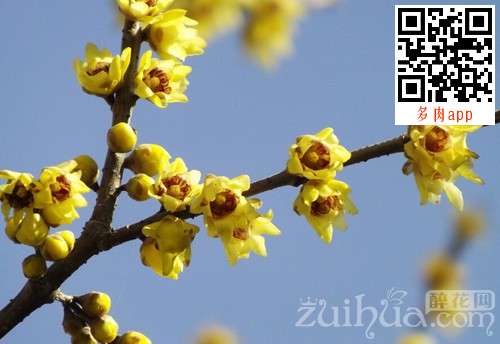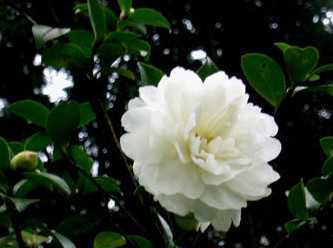Just make the potted preserved plum blossom more?
Chimonanthus praecox is sunny, slightly tolerant of semi-shade, drought-tolerant and afraid of waterlogging, and should be planted in sandy loam rich in humus. Want to make much flower, potted appropriate chooses large-scale deep tube flowerpot, with loose fertile, the sandy loam that drainages well makes cultivate soil. Apply decomposed base fertilizer to the bottom of the pot when putting on the pot. It is advisable to change pots every year or every other year, and change pots should be carried out before germination in spring. Usually placed in the sun to cultivate. Chimonanthus praecox is fond of fertilizer. It is advisable to apply leaf fertilizer twice in spring and compound liquid fertilizer every 10~15 days from the end of June to the beginning of summer. During the summer, when flower buds bloom, it is also the peak period of new root growth, and phosphorus and potassium can be applied for 1~2 times to promote flower buds. However, fertilizer should be thin in the summer, otherwise it is easy to cause rotten roots. After cool autumn, apply-second dry fertilizer (about 50 grams of cake fertilizer each time) to enrich flower buds, and then apply-second thin compound fertilizer before winter to supply nutrients needed for flowering. Fertilization of Chimonanthus praecox L. should be based on phosphorus and potassium fertilizer, and appropriate nitrogen fertilizer. The ratio of the three is roughly 2:1:0.5, which can make Chimonanthus praecox L. flower bigger, flower more and taste thicker.
Calycanthus praecox is drought-tolerant, and there is a saying that Calycanthus praecox does not die from drought. But avoid ponding, if watering too much, basin soil is too wet, plant growth is poor, and flowering water is easy to drop flowers; basin soil is too dry, it is not conducive to its growth, flowers are scarce and irregular, so basin soil should be kept in a state of moisture. Summer hot weather can not be water shortage, growth season watering should also be more-some growth stagnation period to control the amount of watering and stop fertilization. Calycanthus praecox sprout strong, can be re-cut after the flowers fade, promote its multiple branches, more flowers. When the flowers wither, the residual flowers should be removed as soon as possible to prevent them from bearing fruit and reduce nutrient consumption, so as to facilitate the flowering of the next year. North in late October or early November will be moved to indoor flowerpots at low temperature sunny maintenance, you can open in due course.

1. The main reason why potted Chinese plum grows luxuriantly and does not bloom ① Cultivated seedlings. The seedlings of Chimonanthus praecox L. can enter flowering and fruiting stage only after 3~5 years of growth. Therefore, although potted seed seedlings are abundant in water and fertilizer and flourish, they will not bloom early. 2. Excessive nitrogen fertilizer. Some Chinese plum plants are out of control due to water and fertilizer, especially excessive nitrogen fertilizer, resulting in excessive growth of branches and leaves, affecting flower bud differentiation and resulting in no flowering. Therefore, nitrogen fertilizer should be applied in spring, phosphorus and potassium fertilizer should be increased in summer and autumn, and nitrogen fertilizer should be applied less or not to promote flower bud differentiation as early as possible.③ Excessive dampness. Chimonanthus praecox likes light, insufficient light will affect flower bud differentiation; too wet pot soil or too wet place to place, is not conducive to flower bud differentiation. For this reason, late summer and early autumn should be "buckle water", and always put it in sufficient sunlight, which can greatly facilitate the formation and expansion of flower buds. 4. Untopped topping. If the flowering stage of Chimonanthus praecox is allowed to shoot spontaneously in the vegetative growth period of spring and summer, the flower bud differentiation and growth will also be affected due to the uncontrolled vegetative growth. Generally, when 3~5 pairs of leaves are extracted from the tip, the 1/3 part of the tip should be removed in time to promote the germination of the lower lateral buds and the normal differentiation of flower buds. In late summer and early autumn, topping should not be neglected. Second, the method of making Chinese plum blossom more. Chinese plum blossoms on the branches of the current year. Therefore, it should be cut again after flowering. Each pot should leave 3-4 strong main branches. All the rest branches should be cut off. After that, every new branch should be picked once. This can make the branches grow thick and short, and there will be more flowers in the coming year. Chimonanthus praecox likes fertilizer, so it is necessary to apply sufficient base fertilizer when changing pots every year, apply nitrogen fertilizer when new branches are harvested, and increase phosphorus and potassium fertilizer when buds are pregnant. The next day after fertilization, water should be poured once, which is beneficial to root absorption. Chinese plum early tolerance, watering to dry rather than wet, watering is watered thoroughly. Too much water will make Chinese plum leaves, affecting flower bud formation. Flowers should be removed in time after flowering to prevent its fruit, affecting the flowering of the next year. Summary: The above is the analysis of the reasons why potted Chinese plum does not bloom, I hope to help everyone.
- Prev

Planting technique of Artemisia annua L.
Planting technique of Artemisia annua L.
- Next

How to distinguish Camellia, Camellia and Camellia oleifera?
1. Camellia and Camellia are sister flowers of the same genus, there are many similarities in shape, but there are also differences. For example, the young and main veins of Camellia are glabrous, while the young branches and main veins of Camellia oleifera have villi, and the small leaves also have villi on both sides. The flowers of Camellia oleifera are flat and their petals are scattered
Related
- Fuxing push coffee new agricultural production and marketing class: lack of small-scale processing plants
- Jujube rice field leisure farm deep ploughing Yilan for five years to create a space for organic food and play
- Nongyu Farm-A trial of organic papaya for brave women with advanced technology
- Four points for attention in the prevention and control of diseases and insect pests of edible fungi
- How to add nutrient solution to Edible Fungi
- Is there any good way to control edible fungus mites?
- Open Inoculation Technology of Edible Fungi
- Is there any clever way to use fertilizer for edible fungus in winter?
- What agents are used to kill the pathogens of edible fungi in the mushroom shed?
- Rapid drying of Edible Fungi

